We usually associate tiles with bathrooms and kitchens when we think of tiles, but today we want to inspire you to consider tiling your living room and bedroom. Modern tiles are a lovely addition to any house because of their functional and long-lasting properties.
With advancements in printing technology, you can discover stunning and natural-looking tiles for your living room and bedroom that suit any design style. Choosing the perfect colors, textures, and tile types will enrich your living spaces, infusing them with warmth, elegance, and individuality.
We’ll walk through a few options for tiling your living room and bedroom floors and adding an accent wall to give the area fresh vitality in the sections below.
Tiling Your Living Room

Choosing an appropriate tile floor for your living room doesn’t have to be challenging. There are a variety of tile selections to choose from, each with its size, color, texture, and pattern. Because your living room is a high-traffic area, selecting a long-lasting and easy-to-clean material is essential.
Gloss floor tiles are the ideal finishing touch for a luxury living room makeover. Whether you choose grey tiles with a polished stone-effect finish for a modern design or polished wood-like tiles for a softer classic style, the final result will be a living room that is bright and luxurious.
Natural stone or wood flooring is costly, while porcelain and ceramic tiles are more affordable options to create an attractive living space. Wood-like ceramic tiles are a popular design because they look like many different kinds of hardwood flooring.
If you prefer the look of a white carpet, go for a clean white tile instead: it will have the same eye-catching effect while reducing the chance of spills and stains.
Tiling A Wall For Accent
The first step in creating an eye-catching accent wall is to choose the right wall. A poor pick might be the difference between a well-put-together space and one that doesn’t seem right. Next, make sure there’s a purpose to draw attention to whichever wall you pick.
In most cases, the perfect wall to highlight is the first one you notice when you walk into the room. Use marble, slate, granite, or printed designs to make a beautiful accent wall. You can also install an eye-catching three-dimensional tile to give your space a sense of depth.
When choosing a tile color, think about how it will affect the rest of the space, including your other walls, furniture, and artwork. Don’t be afraid to express yourself using bright, clashing colors and various forms and styles. Natural stone and textured tiles offer excitement to your area, while neutral-colored tiles can bring together different aspects of the room.
Even though marble has always been a trendy choice, it is seeing a considerable rebirth. So now is the time to bring it into the bedroom. Because of its lovely patterns and hues, a single marble wall in your bedroom will create a stunning and timeless look.
Tiling Around A Fireplace or Stove

A fireplace or freestanding stove is a gorgeous addition to any living room, and it can help tie your decor together. Most varieties of tiles are safe to use, provided they are at least 8 inches away from the heat source. However, because of its density, porcelain is suggested since it absorbs heat without dispersing it to the immediate surroundings, much like fire-resistant bricks.
The living room’s hearth is frequently the focal point. However, this practical and timeless architectural feature may become the room’s focal point when you know how to pick hearth tiles for your fireplace. Take a large-scale tile and put them from the ceiling down to the hearth to maintain a more contemporary look.
Tiling Your Bedroom
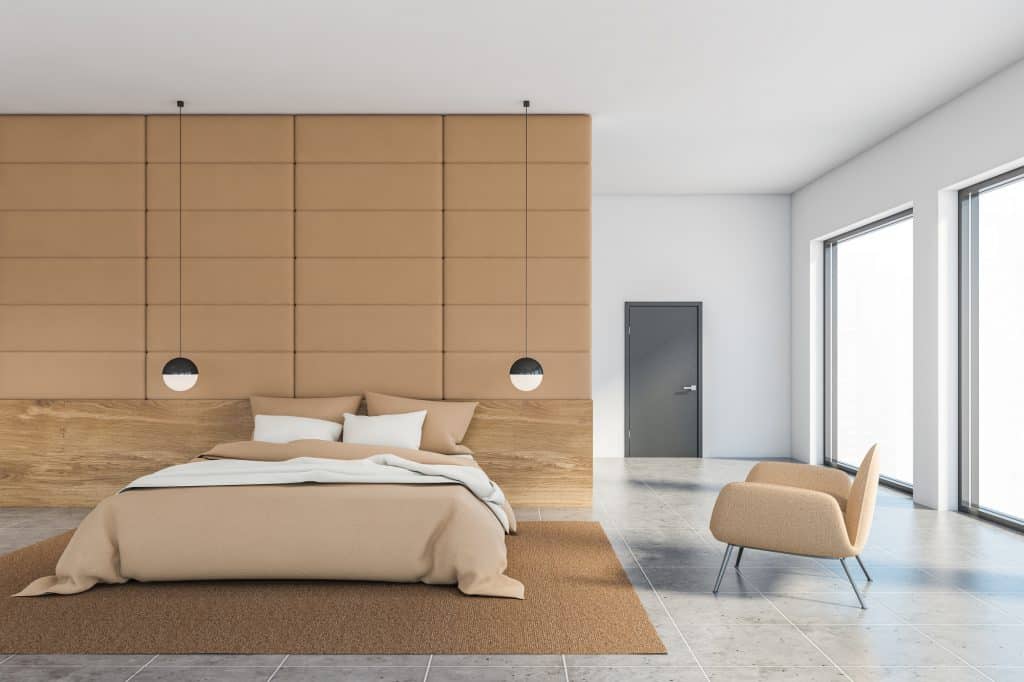
Cork tiles are becoming increasingly popular as a flooring option since they are long-lasting and simple to install, even over an existing floor. Cork is also a biodegradable, ecologically friendly substance that provides additional foot padding, which is a wonderful touch when strolling about your bedroom.
The only drawback is that they require a little more upkeep to avoid pitting, and a cork floor must be cleaned regularly and re-sealed every few years, but we believe the upside outweighs the downside.
Creating a feature wall with high-gloss bedroom wall tiles will give the space a relaxed and contemporary feel, especially when matched with matt-painted walls. Choosing clean white or even colorful tiles will lighten up and transform your bedroom.
To maximize a tiny space, use bedroom wall tiles to create fascinating focal areas that will last the test of time. It is also possible to use tiles to form a border around mirrors or use patterned or mosaic wall tiles to create a tiled portrait over the bed.
For a Mediterranean feel, you can also use mosaic tiles on the floor:
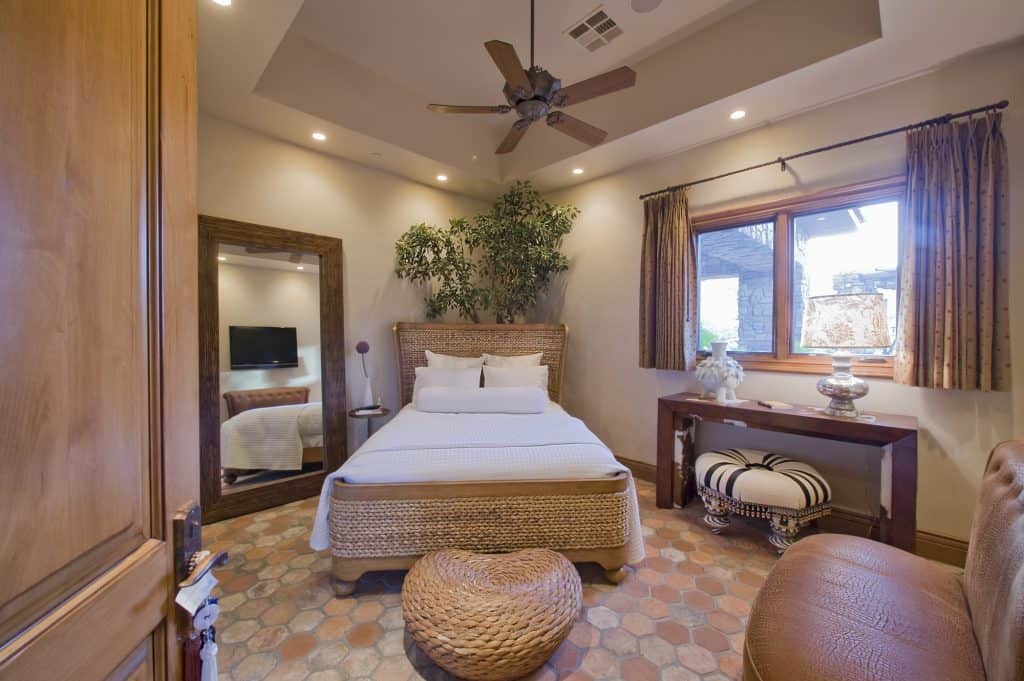
Reflective (Gloss) Vs Non-Reflective (Matt) Tiles
As the name implies, glossy tiles have a brighter, polished, and lustrous finish that helps to reflect light off the surface:
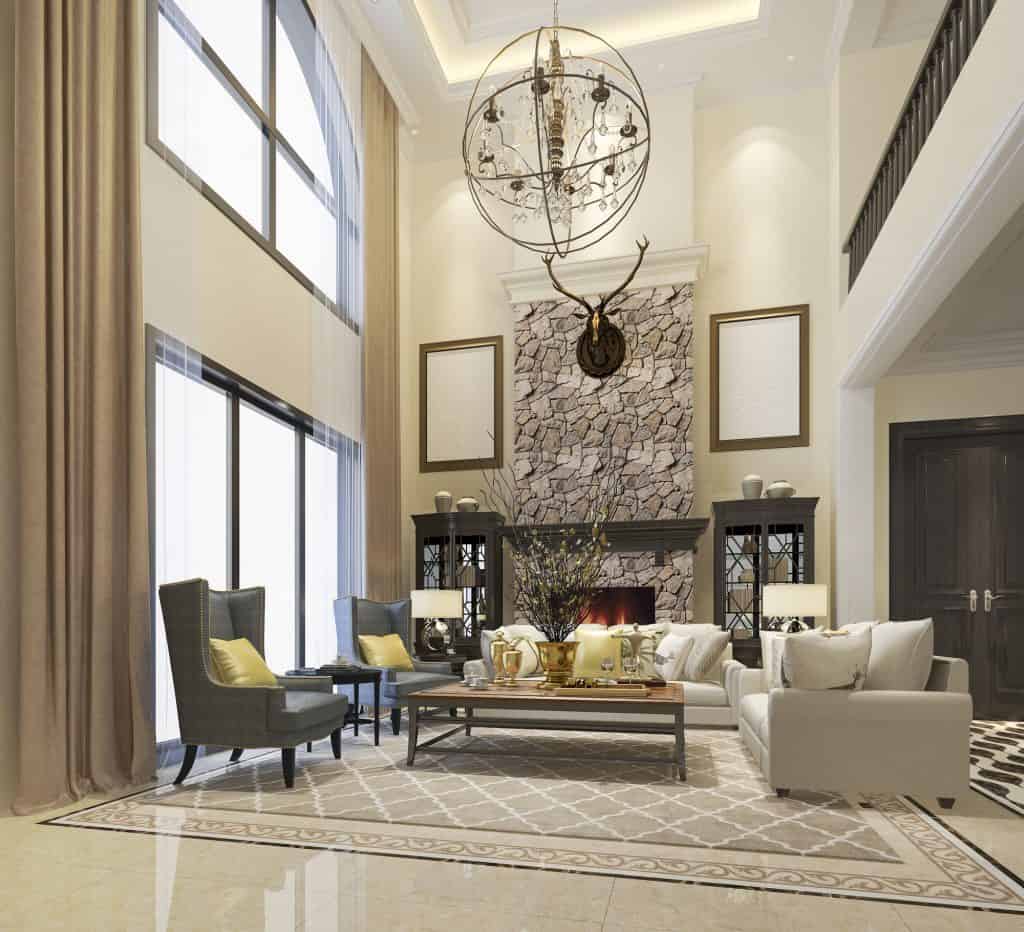
However, as you might assume, Matt tiles aren’t as smooth, resulting in a slightly duller surface that doesn’t reflect light:
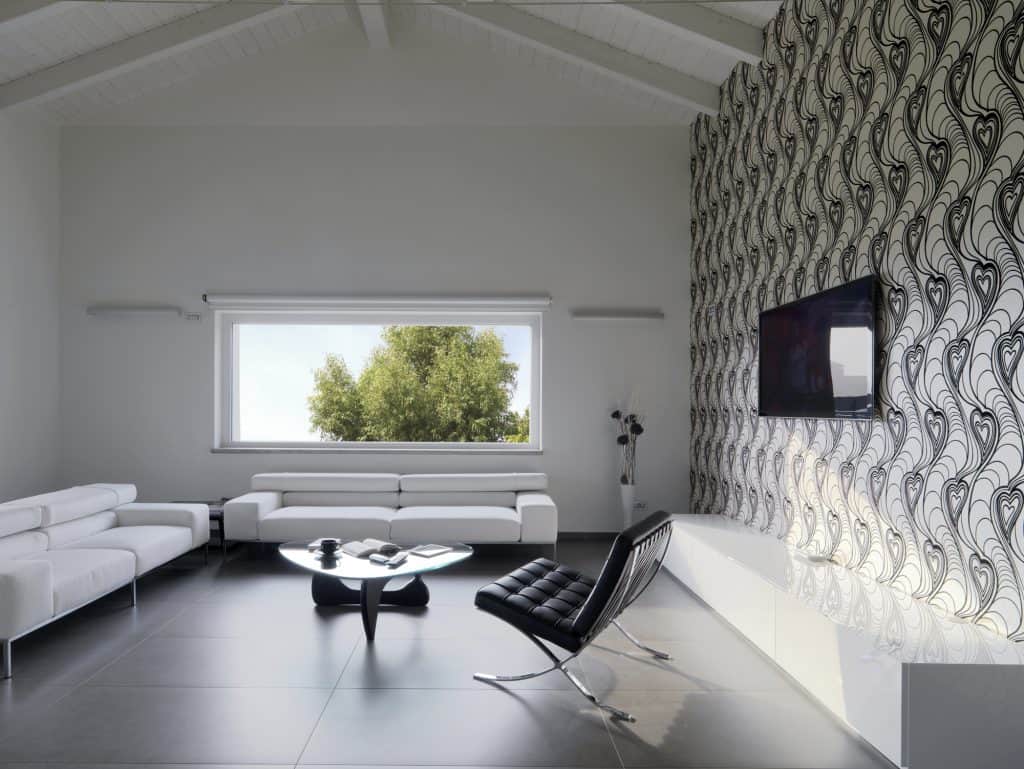
Although the aesthetic distinctions between these finishes are clear, they offer the same durability and quality. In addition, because both gloss and matt tiles are made with the same materials and go through the same production process, they have the same practical and long-lasting properties.
The finishing glaze, which gets placed on the surface of the tiles as a lasting top layer, is the actual difference. The glaze layer might be glossy or matte, as you may have anticipated.
How To Prepare A Wall Before Tiling
It’s not as straightforward as a one-size-fits-all approach, and you must consider the surface on which the tiles will be installed. Preparing the concrete, plywood, drywall, and painted surfaces correctly before tiling is essential. In addition, it sometimes takes up to 30 days for fresh plaster to dry, and wooden surfaces will need priming.
If you’re going to tile over bare brick, blockwork, or cement, you should either render and plaster or use a cement board like Hardie Backer, which is waterproof and fire-resistant.

It is possible to tile over plasterboard, but there are several elements to consider, including the state of your plasterboard and the weight of your tiles. It’s also crucial to properly prepare the plasterboard so that the tiles can firmly adhere to it.
Standard drywall can support a maximum weight of 44 pounds per 10 square feet with a plaster skin, and 70 pounds per 10 square feet without one. When determining if the plasterboard can support the weight of the tiles, keep in mind the tile glue and grout adds 5 pounds to the equation.
If your plasterboard cannot handle the weight of your tiles, a cement board, which can carry up to 440 pounds per 10 square feet, should be used. If your plasterboard has any joints or corners, use joining tape to strengthen them before priming and tiling.
To adequately prepare your plasterboard for the tile adhesive, it is also necessary to prime it. Before tiling, use a big brush or roller to apply an acrylic-based primer and let it dry completely. Some sources recommend priming your plasterboard with PVA glue; however, this will not work and may cause issues since it does not sufficiently sink into the plasterboard.
In addition, it creates a PVA layer that stops the tile adhesive from penetrating the plasterboard resulting in the tiles only held in place by this PVA layer.
How To Prepare A Floor For Tiling
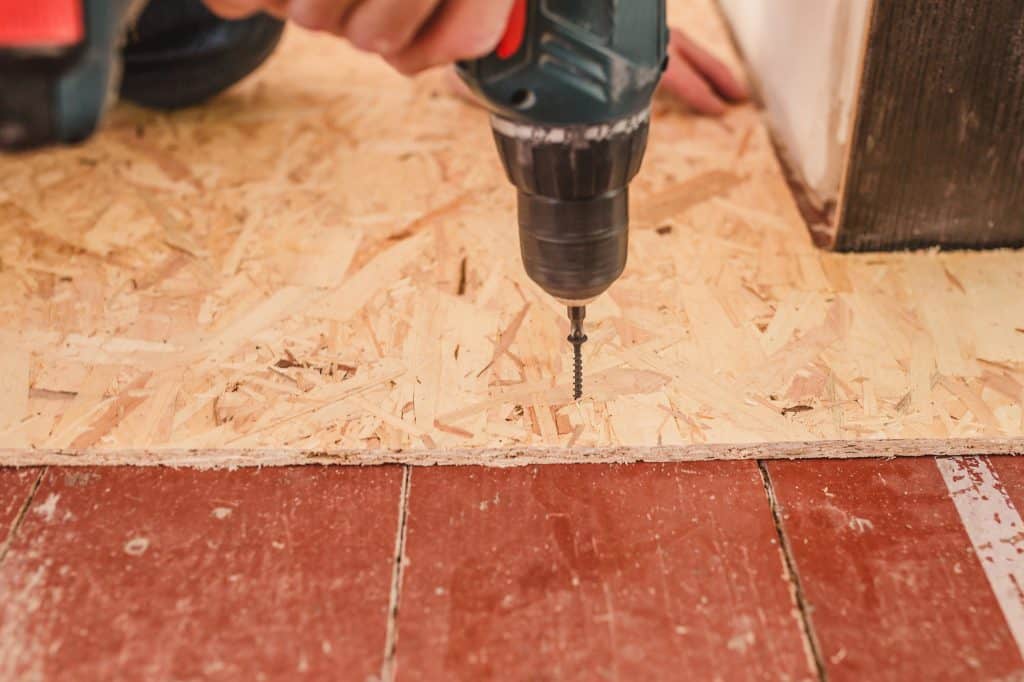
Tile floor preparation differs depending on the type of flooring in the space you’re tiling. For example, concrete subfloors are prepared differently than wood subfloors. However, the subfloor should always be able to support the tile’s weight and the adhesive glue and grout.
According to the manufacturer’s directions, you’ll need to add a cement-based backer board after prepping your wood flooring. This backing board creates an even, flat surface beneath the tile that prevents flexing and splitting.
Before installing floor tile, the new concrete floor should be allowed to cure for three to four months, and any moisture issues or leaks should be fixed. In addition, your concrete floor should be clean, dry, and flat, free of adhesive residue from strippers or cleaners.
It must first be etched or roughed up using chemical or mechanical processes to produce a good connection between the thin-set and smooth concrete slabs. They must also be free of effervescence or salts on the surface and not subject to hydrostatic pressure or moisture penetrating the slab from below.
Conclusion
We find it highly appropriate to add tiles to the living room and bedrooms on the floor or the wall. Interior design is about creating contrasts using different textures, materials, and colors to add depth and character. Bedrooms, which frequently have a lot of plush décor and soft furnishings, may benefit from fresh and clean wall tiles. By adding an accent wall to a room, you create a warm contemporary look to impress.
FAQS
Q: What is the difference between ceramic tile and natural stone?
A: Ceramic tile is a type of tile made from clay that is fired at a high temperature. Natural stone, on the other hand, is a naturally occurring material that has been quarried and cut into tiles.
Q: Can I use ceramic tile on my living room floor?
A: Yes, you can use ceramic tile in your living room. It is a popular choice for many homeowners as it is durable and easy to clean.
Q: How does ceramic tile compare to hardwood in terms of durability?
A: Ceramic tile is more durable than hardwood. It is resistant to scratches, stains, and water damage, making it a great choice for high-traffic areas.
Q: Can I use ceramic tile throughout my whole house?
A: Yes, you can use ceramic tile throughout your whole house. Many homeowners choose to have tile floors in multiple rooms, as it is easier to keep clean compared to carpeted floors.
Q: What are the advantages of natural stone compared to ceramic tile?
A: Natural stone offers a unique and luxurious look that cannot be replicated by ceramic tile. It also tends to be cooler underfoot, which can be beneficial in warmer climates.
Q: Can I use ceramic tile in my kitchen and bathroom?
A: Yes, ceramic tile is a popular choice for kitchens and bathrooms. It is resistant to moisture and is easy to clean, making it a smart choice for these high-traffic areas.
Q: Can ceramic tile mimic the look of natural stone?
A: Yes, ceramic tile can be designed to mimic the look of natural stone. There are many different styles and patterns available to choose from.
